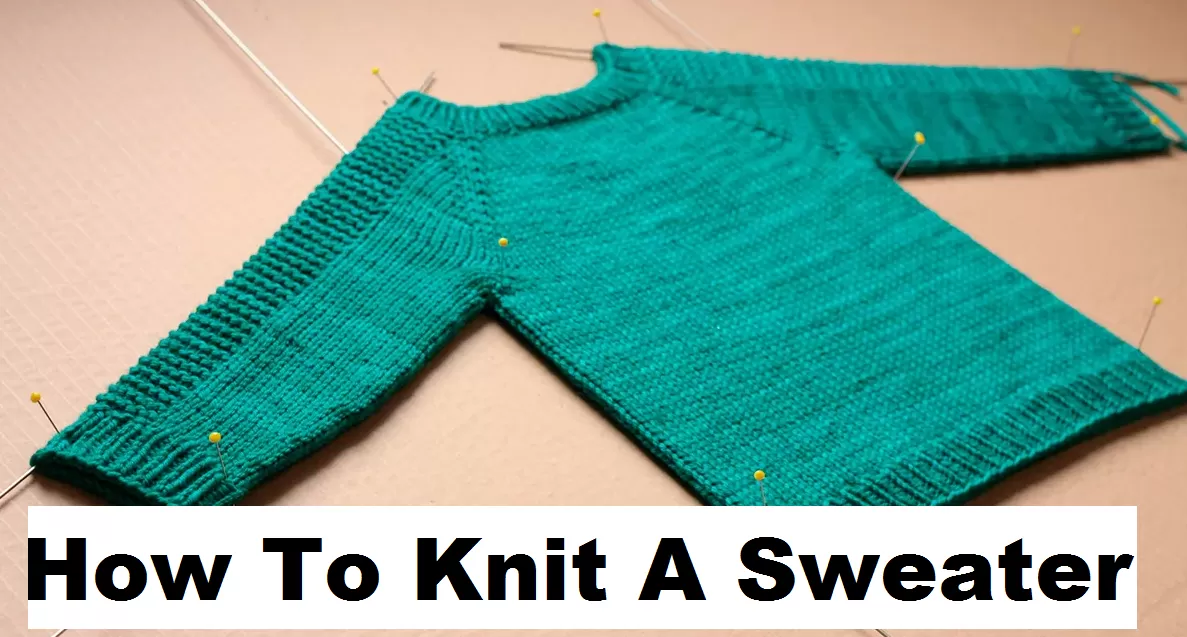How To Knit A Sweater
A sweater is a clothing item that covers the upper part of the body, typically made of wool or cotton. It is usually worn to keep warm during colder weather. Sweaters come in different styles and types, each with unique features and designs.
One type of sweater is the pullover sweater, which has no openings at the front. It is pulled over the head and comes in various designs like v-neck, crew neck, or turtleneck. Another type of sweater is a cardigan that opens up in front with buttons or zippers and can be worn over other clothes like shirts or dresses.
When it comes to knitting sweaters, there are many options for beginners who want to try making their pieces. Some popular types include raglan sleeves, drop-shoulder, and saddle-shoulder sweaters. Raglan sleeve sweaters are easy to make as they only require basic knitting techniques. In contrast, drop-shoulder sweaters feature a simple rectangular design that can be adjusted to fit various sizes. Saddle shoulder sweaters have a more complex design but create an elegant look when finished correctly.
How to purl stitch
Once you have mastered the basic knit stitch, it’s time to move on to the purl stitch. The purl stitch is used in many knitting patterns and is essential for creating textured designs like ribbing or seed stitch. To start, insert your right needle into the front of the first stitch on your left needle as if to knit. Instead of wrapping the yarn around your right needle as you would for a knit stitch, bring the yarn between your needles from back to front.
Next, wrap the yarn counterclockwise around your right needle and pull it through the loop on your left. As you do this, slide the original stitch off your left needle and onto your right. Continue in this manner across the row until all stitches have been purled.
It’s important to note that when switching between knitting and purling within a pattern, bring the working yarn over or under both needles before starting each new row. It will ensure that both sides of your work look tidy with no loose strands or holes. With practice, mastering the purl stitch will open up a world of possibilities for creating beautiful knitted garments!
How to knit in the round
When knitting a sweater, working in the round is an essential technique that can save time and effort. It involves knitting continuously in a circular motion without turning your work back and forth. This method allows you to create seamless garments with no visible seams, perfect for sweaters.
To start knitting in the round, you will need circular needles or double-pointed needles (DPNs), depending on the size of your project. The first step is to cast stitches onto your needle(s) using any method. After casting on stitches, join them by placing a stitch marker at the end of the round to indicate where each new row starts.
Once you have joined your stitches, begin knitting just as you would with straight needles. Knit all rows until you reach the desired length of your project. When it’s time to switch to different colors or stitch patterns, carry yarns inside your work so they are not visible from the outside. Finally, when you’ve completed all rounds and achieved the correct measurements for armholes and neck openings, if necessary, bind off all stitches smoothly so that no loose ends are left hanging out!
What are the steps for knitting a sweater?
The steps for knitting a sweater are not difficult, but they do require some time and patience. First, you must choose a pattern matching your skill level and the desired style. Then, you’ll need to select the appropriate yarn weight and color scheme.
Next, it’s time to cast on the required number of stitches according to the pattern instructions. Once you have done this, you can begin shaping your sweater by following the instructions for increasing or decreasing stitches as needed. You will also learn to knit in patterns such as stockinette stitch, ribbing, or cables.
As you work through each section of the pattern, keep track of your progress by checking measurements against those provided in the pattern. Finally, once all sections are complete per instructions (including any sleeves), it’s time to sew everything together neatly while ensuring that seams don’t bunch up or pucker at the wrong places. With these steps mastered successfully, you’ll end up with a fantastic hand-knitted sweater that is both beautiful and warm!
What are some important techniques to know?
Firstly, understanding the basic knitting techniques is important when it comes to creating a sweater. Techniques such as casting on, knit stitch, purl stitch, and binding off are essential skills used throughout the project. It’s also important to understand how to read a pattern and adjust tension based on the type of yarn used.
Secondly, incorporating different textures and patterns into the sweater can add interest and depth. Techniques such as cable knitting or different types of stitches can create visually appealing designs. However, it’s important not to overdo it with too many complicated techniques that may distract from the overall design.
Lastly, finishing techniques are vital in giving the sweater a polished look. Blocking is an essential technique that helps even out any inconsistencies in tension throughout the garment. Seaming techniques such as mattress stitch or grafting can give any seams in the sweater a seamless finish.
Anyone can knit a cosy and stylish sweater by understanding these techniques and practising them regularly.
FAQs
What kind of yarn should I use for knitting a sweater?
There are many types of yarn you can use to knit a sweater, but the best choice depends on the design and style of your sweater. Wool or alpaca yarn might be the best option if you want a warm and cosy sweater. Cotton or linen yarn might be more appropriate if you prefer something lighter. When selecting your yarn, consider the gauge recommended in your pattern and match it with a suitable yarn weight.
Can I change the stitch pattern in my sweater?
Yes! One fun thing about knitting is that you can customize patterns by changing stitch patterns. However, keep in mind that changes like this could alter your garment’s overall look or sizing. Before making any changes to your pattern, it’s important to swatch first and ensure that the new stitch pattern works with gauge and sizing.
How do I care for my knitted sweater?
Caring for knitted garments is essential to ensure they last long-term. Always check your garment’s label for specific care instructions – some fibers require special washing techniques! In general, hand-washing in cold water is recommended over machine washing. It’s also suggested to lay it flat to dry rather than putting it through a dryer cycle, as heat can cause shrinking or felting issues with certain fibers like wool or alpaca.










